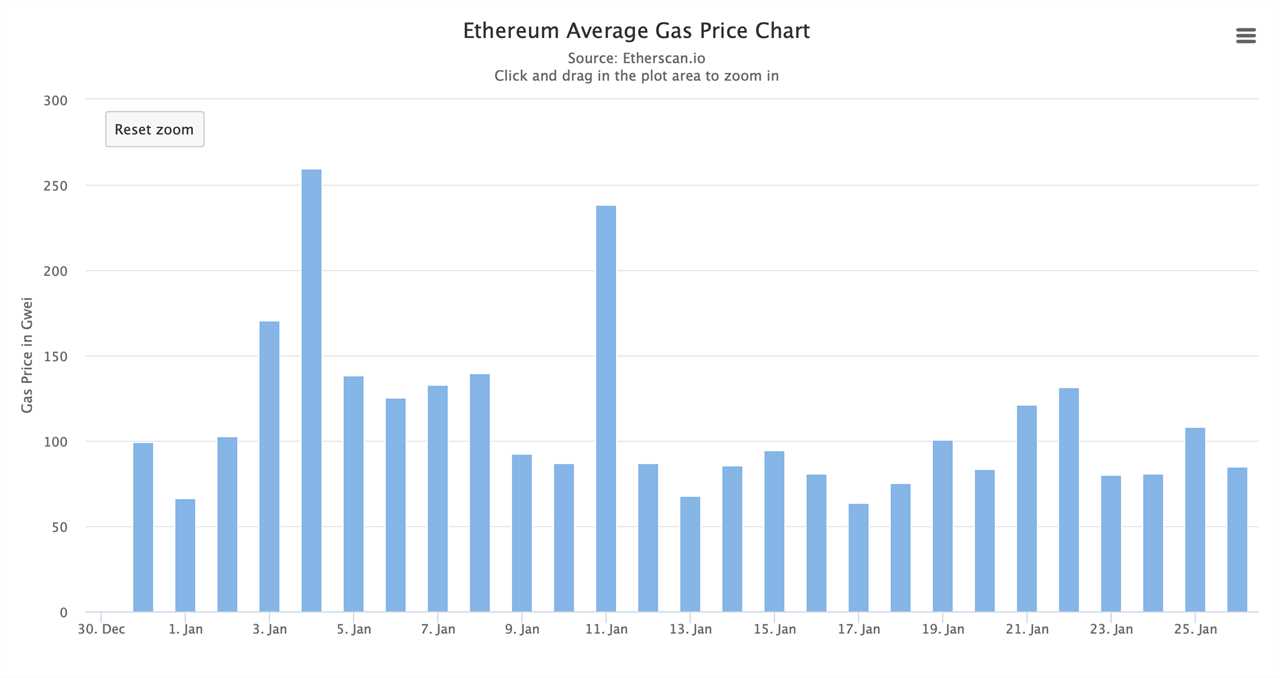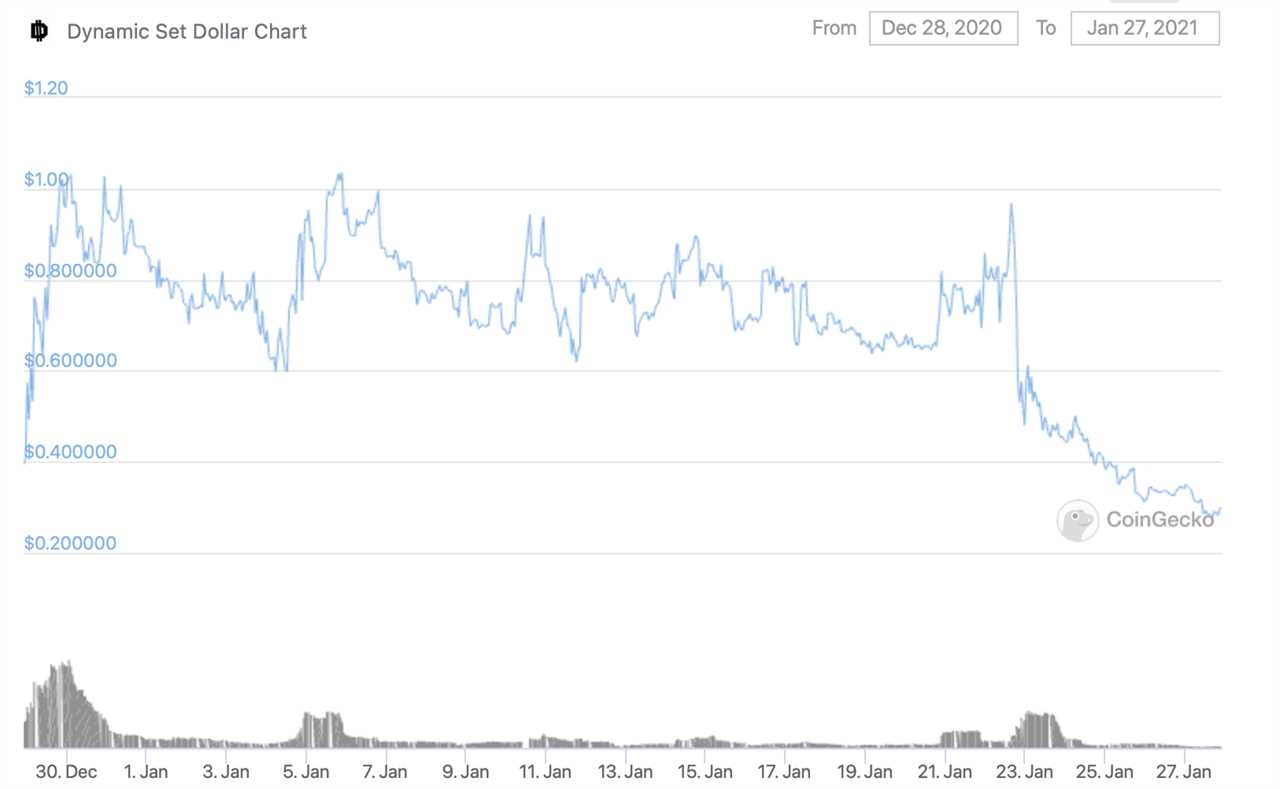
This is a repost of Finance Redefined's latest installment, where Cointelegraph unpacks the latest developments in DeFi. The newsletter is delivered to subscribers every Wednesday.
DeFi was reasonably quiet in terms of major fundamental developments, instead letting prices do the talking. Many tokens rallied, both the popular and the almost forgotten. Save for a few hiccups due to Bitcoin’s shaky price action, we are still well into DeFi season.
This price action, unfortunately, means that using DeFi is pretty much impossible. Ethereum gas fees steadily hovered above 100 Gwei, which to any veteran will seem like an impossibly large number. While we’re not quite at the 300 Gwei seen in the summer of DeFi, it’s worth remembering that Ether is also worth about 3-4 times as much.
For a fun exercise, try inputting your wallet address in fees.wtf and marvel at just how much money you threw to miners.

The good old days when you could confidently send a transaction for 2 Gwei seem so far away now. Until we get back to that point, fees will remain a serious deal-breaker for mere mortals who can’t transact with tens of thousands of dollars at a time.
With DeFi, you also can’t really afford to be stingy. A transaction sent to Uniswap or another decentralized exchange has to be confirmed pretty quickly, or it’s likely to fail due to slippage protection or other limits. A failed transaction stings twice: Not only does it not do what you want, it also consumes the gas fee anyway.
Unfortunately, there isn’t much that you can really do about this. I did, however, write a piece this week on how to find the right time to send a transaction.
Picking the right time is probably the most accessible trick. Fixing the problem entirely, on the other hand, requires ditching Ethereum and its liquidity. I suggest you still explore the various non-Ethereum options available, including layer-two chains and external blockchains. Chances are you’ll find what you need, assuming you’re not a sophisticated ape tracking Andre Cronje’s wallet for his latest unreleased project.
Kyber announces 3.0 upgrade
Kyber Network devised a pretty cool upgrade for its liquidity protocol. For a bit of context, the exchange used to be fairly competitive with Uniswap early on in 2020 but it fell behind in the second half of the year. Skyrocketing gas fees likely contributed to this outcome, as its decentralized exchange is one of the most expensive protocols to use.
Thankfully, the gas situation will change with the 3.0 upgrade. The team is redesigning the contracts to optimize gas usage, which hopefully will put Kyber more on par with the rest of the ecosystem. The new system is also built for integrations with layer two platforms, which should be useful for the long term.
The core of the upgrade is the concept of specialized liquidity pools. Instead of having two or three decentralized exchanges doing different things — for example Uniswap for buying tokens and Curve for swapping stablecoins with one another — Kyber will just have different types of pools for different assets. Since Kyber is also an aggregator not unlike 1inch, this should make the protocol the all-in-one decentralized exchange.
Plus, the protocol will also have dynamic fees depending on volatility. This can greatly help with impermanent loss, since liquidity providers will be compensated more for their potential losses.
The only real downside of 3.0 is time — Full rollout will happen in the second half of the year.
Central bank of DSD fails to revive the project
I can’t help but chuckle at the irony of what happened this week in algorithmic stablecoin land. The community of Dynamic Set Dollar, one of many such “stablecoins” that sprung up recently, apparently made a pact with a whale to stop them from dumping all their DSD and depressing its price.
The reason? The community members were holding $84 million in coupons, which were set to expire in two days. Coupons give you the right to get newly minted coins for when the price goes above $1. When the peg with the USD breaks down, coupon holders shoulder the risk by burning their “dollars'' in exchange for a promise to receive more of them next time supply expands.
Imagine my surprise when I learned that coupon holders not only need to hope the coin’s price ever gets back to $1, it also must do so quickly. In just two weeks, to be precise.
So the community did the only natural thing, and bought out 5.5 million tokens from a whale going by escobar.eth, who previously dumped millions of tokens. The exchange occurred at a price of $0.62, according to Etherscan logs.
So with the nefarious Escobar defeated, did DSD coupon holders feast on the next supply expansion? No.

DSD almost reached $1 after the news. But something went wrong immediately after, with the coin plummeting all the way to $0.29. As you may expect, those millions in coupons expired. Seriously, who buys coupons knowing that two weeks is all the time you get?
The intervention was ultimately a valiant attempt by DSD holders to defend their currency, and it’s really not unlike the central banks of countries who peg their fiat currency to another. George Soros first became famous by successfully shorting such a peg for the British pound.
As famous crypto lawyer Preston Byrne so eloquently wrote all the way back in 2017: “These situations are an object lesson in why you don’t try to peg currencies: because you are unable to hold the peg any longer than you can afford to subsidize your differences of opinion with the market.”
In other news:
- StakeDAO rolls out multi-million dollar airdrop not unlike Uniswap back in the day.
- We published an overview of Ethereum competitors that show promise to take its mantle in DeFi.
- Aave sees partial integration in Matic’s Plasma layer-two chain.
- BadgerDAO, a rebasing coin that follows Bitcoin’s price, launched this week.
- Circle launches swaps between USDC and USD, potentially connecting the banking layer to DeFi
Title: Finance Redefined: What can you do about those gas fees? Jan. 20–27
Sourced From: cointelegraph.com/news/finance-redefined-what-can-you-do-about-those-gas-fees-jan-20-27
Published Date: Thu, 28 Jan 2021 11:42:26 +0000






